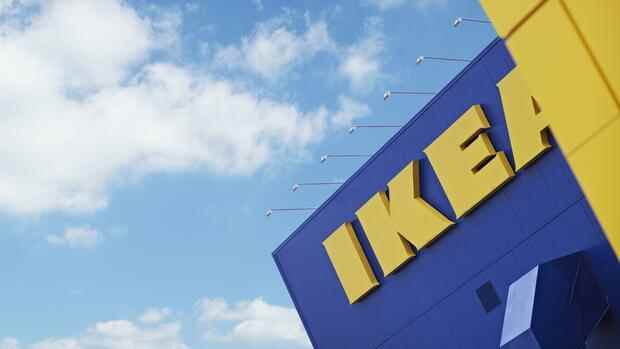Dusseldorf Ikea has set itself high goals on the way to more sustainability. The furniture giant wants to become climate-positive by 2030. In absolute figures, the Swedes want to reduce their CO2 emissions by 15 percent compared to 2016 – with a significant increase in sales.
But the past year has shown how difficult it is to get there. After Ikea was able to reduce its climate footprint, i.e. the absolute CO2 emissions worldwide, in 2020 for the second year in a row, it rose again in 2021: from 24.7 to 26.2 million tons of CO2 equivalents.
Jon Abrahamsson Ring, CEO of the sales company Inter Ikea, admitted when presenting the sustainability report for 2021: “Our footprint has increased because our sales have increased again.” Because the significant decline in 2020 was also a consequence of the corona pandemic : Many branches had to close, business shrank – and with it the impact on the climate.
“We still have a big challenge ahead of us,” admits Abrahamsson Ring. But he is convinced: “In the long term, we have the chance to break this trend.” Through the more efficient use of resources, it is possible to decouple emissions from sales growth even more.
Top jobs of the day
Find the best jobs now and
be notified by email.
What gives him courage: Compared to the internal reference year 2016, emissions have fallen by 5.8 percent. That means a reduction of 1.6 million tons of CO2 equivalent. Sales increased from 36.4 to 41.9 billion euros in the same period.
Carbon Disclosure Project certifies progress
Despite all the difficulties, environmental protection organizations such as the Carbon Disclosure Project (CDP) confirm that Ikea is on the right track. In the most recently published ranking for 2020, Ikea received the top rating of “A” for climate protection. The group had already received an “A-” in the 2017 rating.
Maxfield Weiss, Director of Corporate Engagement at CDP in Europe, attested to Ikea’s significant progress. The company has opened up more and is becoming more transparent. “At Ikea we saw another significant improvement, which is encouraging,” he reported, “the company is one of the pioneers in climate protection.”
But a company like Ikea has a huge impact on the climate due to its sheer size and business model. For example, Ikea accounts for one percent of all wood consumption worldwide.
The most difficult point on the way to more sustainability is the material used, says Andreas Ahrens, who heads the climate program at Ikea. Many initiatives have been launched, such as saving material through new production methods or switching to sustainable timber management. More than 99 percent of the wood used for Ikea products is FSC-certified or recycled.
Increasing use of materials spoils the balance sheet
But it will still take a while for these measures to take full effect. “The subject of material is very complex,” he says. More than half of the climate footprint at Ikea is caused by the material for the products.
Ikea has made great strides in many other areas. Emissions in production have fallen by 29.6 percent compared to 2016. The company was able to reduce the emissions of the food used in the restaurants by 27.5 percent – for example by supplementing the popular Köttbullar minced meatballs with vegan vegetable balls.
But a large part of this success is eaten up again by the increasing material consumption with growing sales. The extraction and processing of raw materials caused emissions of 13.6 million tons of CO2 equivalents last year – around 13 percent more than in 2016.
Despite this, Lena Pripp-Kovac, Inter Ikea’s Chief Sustainability Officer, is convinced that the company can achieve the goals it has set for itself. “With a view to 2030, we are on track and have already achieved a third of our planned emission reduction through many short and medium-term measures,” she emphasizes.
Ikea founder Ingvar Kamprad set the guidelines
All of our own production facilities have already been converted to the exclusive use of renewable energies. In addition, Ikea has now launched a program to speed up the transition of 1,600 suppliers to renewable energies.
One thing is particularly important to Pripp-Kovac: “We have to be very transparent about everything we do on the way to more climate protection”. Ikea does not use any compensation measures to improve the climate footprint. Compensating for climate impacts can be a good tool, but it shouldn’t be mixed up with the footprint. “It’s like living on credit,” she says.
The Ikea boss emphasizes: “We want to make sustainability affordable for everyone.”
(Photo: IKEA)
“We still have to do more,” explains Inter-Ikea CEO Abrahamsson Ring, “because we really want to achieve an effect.” Despite the price increases announced for this year, Ikea does not want to lose its status as a cheap provider under any circumstances task even more difficult. “We want to make sustainability affordable for everyone,” says the Ikea boss.
He refers to the Ikea founder Ingvar Kamprad, who died four years ago, and whose personal assistant he was for two years. “Ingvar always told us: do more with less,” remembers Abrahamsson Ring.
This appeal to reduce the resources used is still the best guideline today.
More: Climate pioneers series – Ikea wants to grow and at the same time become climate-positive
